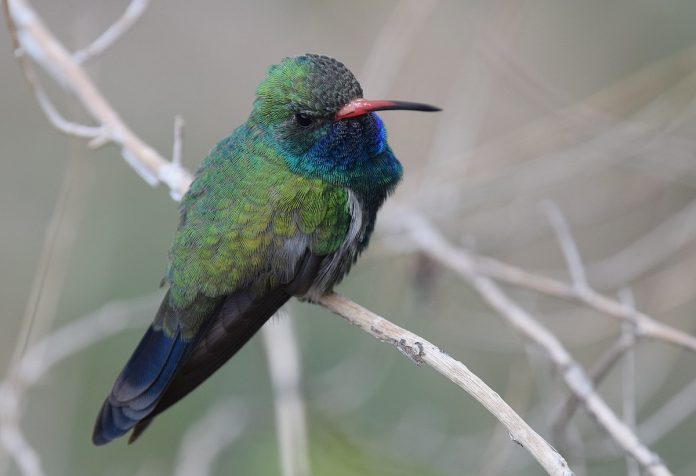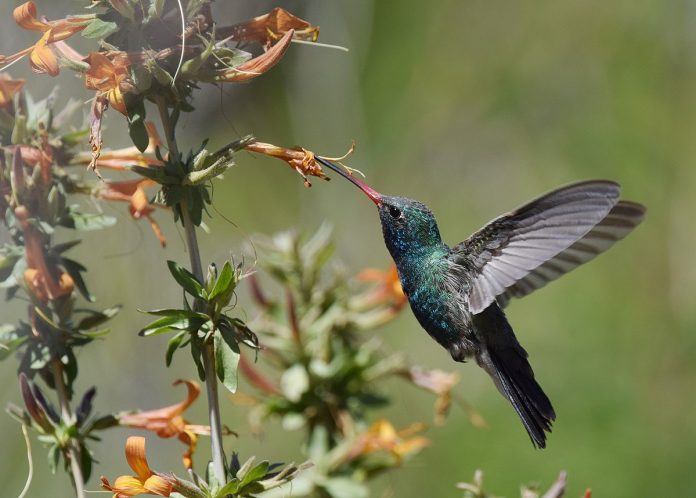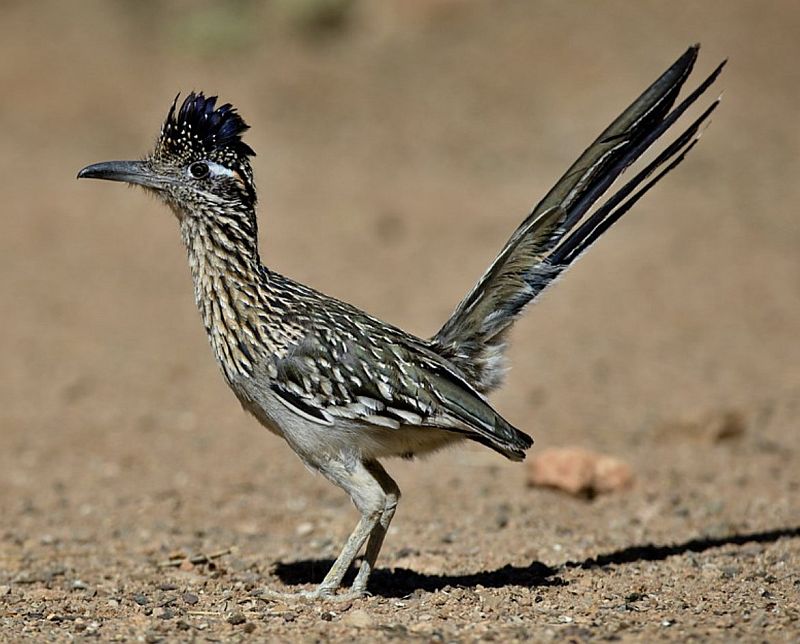Description: The stunning broad-billed hummingbird (Cynanthus latirostris) is a diurnal bird, that displays sexual dimorphism, also identified by its other common name, the Colibrí Pico Ancho in Spanish and Colibri circé in French. Despite its name, the bill of the broad-tailed, glitteringly iridescent Broad-billed Hummingbird is no broader than that of many of its close relatives.
Identification: The blue of the male’s throat and upper breast varies regionally from deep indigo to turquoise across the five subspecies and is most extensive in the slightly smaller males of the Pacific lowlands of southern Mexico (subsp. doubledayi). The male hummingbird has a vibrant red bill and a black tip. The male has a blackish-blue tail, which is a little broad. In flight, the feather turns brownish-gray.
Females are similar to the closely related Chlorostilbon emeralds, with gray underparts, pale belly, prominent white eye stripes face markings, and white tips on the outer tail feathers. With the passage of time, juvenile male bird bill turn into reddish and iridescent feathers.

Northern populations are partially migratory, moving north and inland during the breeding season. The winter range has expanded with the increasing prevalence of feeders and winter-blooming hummingbird gardens in the southern and southwestern United States. Post-breeding wanderers have been recorded in the Great Lakes region, southeastern Canada, the Rocky Mountains, and the Pacific flyway.
Distribution: The broad-billed hummingbird is usually found in Mexico and the United States. There are subspecies of Broad-billed Hummingbird. The Subspecies C.I. latirostris occurs in east-central Mexico; subspecies C.I. lawrencei is restricted to the Marías Islands off the western coast of Mexico; subspecies C.I. magicus ranges from the southwestern United States to central-western Mexico; and subspecies C.I. propinquus occurs in central Mexico. However, there is doubt about subsp. C.I. doubledayi occurs in southern Mexico, normally treated as its own species.
Read More: Sapphire-bellied Hummingbird (Chrysuronia lilliae)

Habitat: Tropical deciduous forest, thorn scrub, foothill, and canyon woodlands, riparian edges; 0–7,200 ft (0–2,200 m)
Taxonomy: According to Wikipedia, more than 360 described species of hummingbirds can be further categorized into 9 different clades.
Size Length: The small hummingbird size is about 31⁄8– 37⁄8 in (8–10 cm) long.
Weight: Broad-billed hummingbird has only 3 to 4 grams weight, however, male birds have a little more than females. The wingspan is about 5.1 inches (13 cm).
Status: Least Concern
Vocalizations, Songs, Calls, and Sounds: Broad-bill hummingbirds has a chattering that sounds like a quick chi-dit. The call can be heard while perching or in flight. Moreover, the male whining zing song is little known.
Feeds: Broad-bill hummingbirds habitually rely on insects and nectars. They are often found around the red and yellow flowers. This little gem also visits the sugar-water hummingbird feeder. The god-gifted long bill helps the bird penetrate its long tongue into the flower and take the nectar while hovering. While feeding the insects, they often catch them in mid-air or hover over or pluck them from the plant.
Related Articles: Neblina Metaltail (Metallura odomae)







